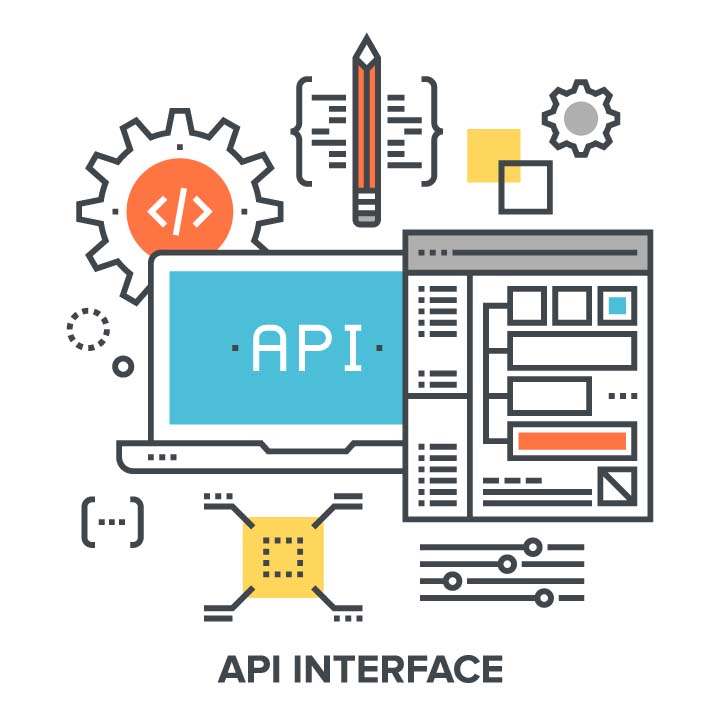
Digitalna transformacija treba da sa prostog izveštavanja i reaktivnog delovanja na osnovu analiziranih trendova obezbedi prelazak na izveštavanje blisko sadašnjem trenutku (real time reporting). Uz veću primenu Internet of Things i Big Data Analysis sistem će se osposobiti da sa sigurnošću od preko 90 procenata predviđa ponašanja i tako se spremi za prvovremeno i izbalansirano reagovanje, skoro u realnom vremenu. Potpomognuta algoritmima veštačke inteligencije i Machine Learning-om, self-service kultura će otvarati nova tržišta.
Digitalna transformacija nije trenutan trend, moda ili tehnološki hajp. To je globalna promena načina na koji živimo. Velikom broju nas ovo nije ništa novo ni nepoznato. Naš privatan i poslovni život svakodnevno se menja pod uticajem digitalne tehnologije.
Ako po strani ostavimo „nas“ kao individualne korisnike onoga što ona pruža, digitalna trasformacija otvara mnoge mogućnosti i drugim učesnicima u igri. Za kompanije, koje deluju kao integratori, ona znači zadržavanje i povećavanje prisustva na postojećim tržištima, ali i kreiranje i ulazak na neka nova.
Za kompanije koje su samo korisnici, to je prilika da se postojeći poslovni procesi dalje automatizuju, optimizuju i smanje troškovi primenom novih tehnoloških rešenja. To, sa svoje strane, učvršćuje njihovo učešće u živoj tržišnoj utakmici.
Do sada smo shvatili da je digitalna transformacija bitna. Zašto je to tako?
U Srbiji 54% stanovništva tj. 4.7 miliona koristi internet. U svetu postoji preko 3,83 milijarde internet korisnika. Deset novih se pojavi svake sekunde. Ako tome dodamo i 11 milijardi povezanih uređaja (pri čemu se ova brojka ne odnosi na kompjutere, tablete i druge smart uređaje) koji takođe šalju neke podatke i komuniciraju sa drugim uređajima onda dolazimo do spoznaje o kojoj količini podataka koja se razmenjuje, traži ili prikuplja govorimo. I ta količina konstantno raste.
Što je više podataka, značajnija je uloga digitalne transformacije koja sve njih treba da upotrebi na pravi način da bi dobili informacije. U prošlosti se ta uloga uglavnom svodila na izveštavanje, ali u 2018. godini to je mnogo više od toga.
Da upotrebim i jedan primer kao ilustraciju potencijala. Automobilska industrija je vrlo napredna kada je reč o tehlologijama i vrlo fokusirana na ulaganja u istraživanje i razvoj u cilju dalje automatizacije svih procesa. I pored toga tek 5% podataka prikupljenih iz autonomnih vozila se zaista koristi za donošenje zaključaka.
Tu leže velike mogućnosti. Digitalna transformacija treba da sa prostog izveštavanja i reaktivnog delovanja na osnovu analiziranih trendova obezbedi prelazak na izveštavanje blisko sadašnjem trenutku (real time reporting). Uz veću primenu Internet of Things i Big Data Analysis sistem će se osposobiti da sa sigurnošću od preko 90 procenata predviđa ponašanja i tako se spremi za prvovremeno i izbalansirano reagovanje, skoro u realnom vremenu.
Veštačka inteligencija će učiniti IT pametnijim, produktivnijim i korisnijim
Ulaganja u razvoj veštačke inteligencije i machine learning, posebno u tehnologiju koja prikuplja podatke, je još jedan očekivani trend. Kamere više neće samo videti već i razumeti sliku. Mikrofoni neće samo snimati nego i slušati. Mala prezentacija toga kako to može da izgleda jesu i aplikacije za prepoznavanje pesama koje koristimo.
Blockchain tehnologija još snažnija
Trend daljeg razvoja blockchain tehnologije nastaviće da daje transakcijama još veći integritet i nepromenjivost. Ona će osnažiti algoritam koji, sa svoje strane, garantuje sigurnost. Ovo će dodatno ohrabriti veći broj kompanija da učestvuju u digitalnoj transformaciji.
U svetlu ovih trendova kako jedan integrator treba da se postavi?
Da bih vam ovo objasnio iskoristiću primer uspešne digitalne transformacije sprovedene od strane Apple-a. 2007. godine Steve Jobs je krenuo sa razvojem Web 2.0 i Ajax aplikacije sa svim, za to vreme, modernim open web standardima. Kako se to nije pokazalo kao uspešan put, Apple je prešao na zatvoren sistem i uveo obavezu plaćanja svojih aplikacija. Zajednice Linux i Unix programera, ljudi koji dale svoj know-how sa svima predviđali da će takav koncept propasti, ali to se nije dogodilo.
Zajednica oko Apple, koja prihvata njihov razvoj, dobija mogućnost da uz pomoć besplatnih alata dalje razvija aplikacije i funkcionalnosti za njih. Lakoća pronalaženja rešenja i postojanje gotovih aplikacija je ono što Apple čini ekosistemom koji sam sebe održava dok je zajednica ostala koherentna, zbližena i sve veća. To je održalo Apple Store i pomaže mu da se dalje razvija. Imajmo to na umu!
Osim kompjutera koji održavaju Apple Store funkcionalnim, sve ostalo je koncept, a koncept je pobedio. Apple Store prevazilazi klasičan oblik digitalne transformacije, postaje nematerijalno dobro koje pokazuje način razmišljanja koji treba slediti u budućnosti.
Za mnoge integratore je kasno da se uključuju u Play ili Apple Store da bi se tako otvorili nova tražišta za sebe. To ne znači da ne postoje mogućnosti. Otvaranjem sopstvene prodavnice (market place) tržištu se mogu ponuditi kvalitetni plug-inovi, aplikacije i alati. Tržište prepoznaje kvalitet i ume da ga nagradi davanjem dobrih ocena i komentara. Sa povećavanjem značaja i uticaja prodavnice šire se mogućnosti za nove poslove.
Ovaj moćni pristup ne treba da nas zadrži u domenu mobilnih aplikacija već ga treba primeniti na ceo IT kako bi se biznis dalje razvijao.
Da bi bili produktivniji primenimo koncept gradivnih blokova (building blocks)
Blokovi tj. delovi kôda ili moduli „pakuju“ se da bi jedno integralno rešenje funkcionisalo. Zato razvoj softverskih rešenja ne mora i ne treba uvek da kreće od nule. Ovo važi i sa hardverska rešenja i kombinacije.
Gradivni blokovi, a posebno njihova sposobnost da budu ponovno upotrebljeni, dobijaju na značaju kako raste veličina skladišta podataka.
Iz primera Apple-a svaka firma koja proizvodi softverska rešenja treba da nauči da postoji interes da razvija blokove koje neće da naplaćuje, da bi se oko njega razvila zajednica. Softver zbog ponovne upotrebe postaje jači pa se neminovno otvaraju nove poslovne mogućnosti.
Deviza „There is an app for that“ treba da preraste u „There is an API for that“. API kao otvoren sistem, mesto gde se postavljaju gradivni blokovi pozitivno utiče na povezivost koja je paradigma 21. veka i omogućava razvoj self-service koncepta. To menja ulogu IT-a u svakoj firmi.

Ekosistem web API-ja je taj koji najviše podržava biznis IT rešenja
Na tršištu weba postoji 18,000 otvorenih API-ja. To značajno umanjuje potrebu da se pri kreiranju neke namenske aplikacije sve radi od početka. 90% osnove bilo kog softverskog rešenja čine već postojeći blokovi. Korišćenjem dovoljno zrelih API-ja i gotovih gradivnih blokova štede se resurse koji mogu da se uposle na drugim projektima.
U svemu ovome presudna je uloga Chief Information Officera (CIO)
Bez obzira da li kompanija ima nekog na funkciji CIO ili nekoj sličnoj, njegova uloga je da sinhronizuje ulogu IT-ja sa potrebama biznisa i nauči razvojne timove da uvek razmišljaju o tome da postoje delovi projekta koji su negde već implementirani i ne moraju da se razvijaju.
Dobar primer za to je CIO Amazona. Amazon, kao što se može pretpostaviti, ima mnogo razvojnih timova koji rade na različitim projektima. Da bi se njihov rad na najbolji način iskoristio i gotova rešenja brže izbacivala na tržište postoji interni API gde svaki tim deli ono što je razvio kako bi ostali mogli to ponovo da upotrebe. Takva logika je dovela do toga da putem AWS Amazon servisa svako može da kupi gotova softverska i hardverska rešenja i da se u par klikova postavi server, servis i obezbede licence. Sve funkcioniše po principu „pay as you grow“, pa se konfiguracije mogu nadograđivati u skladu sa potrebama i finansijskim mogućnostima korisnika.
Interne platforme, osim IT stručnjacima pomažu i ostalim zaposlenima da samostalno pokreću alate koji su im neophodni za rad. Tako se, uz minimalnu IT podršku, self-service koncept širi kroz kompaniju i menja dosadašnje uloge. Interni IT ili eksterni integrator je tu da omogući da platforma funkcioniše. Skraćivanjem vremena koje se ulaže u instaliranja i podršku oslobađaju se resursi za druge, ozbiljnije funkcije.
Izgradnja aplikacijske mreže (application network) bazirana na višenamenskoj ponovnoj upotrebi API-ja (API reuse) je zapravo ono čemu treba da težimo – enterprise market place. Ako to strateški podržimo, uz neminovna značajna ulaganja u IT i kadrove, onda možemo da se pozicioniramo i razvijemo u značajne igrače.
Self-service kultura, nekada na Apple Storu će prerasti u self-service bilo kog softverskog ili hardverskog rešenja, kako interno u okviru kompanija tako i eksterno na tržištu. Juče je to bio Go Dadddy sa domenima i hostingom, danas je to Amazon AWS, a sutra je to platforma preko koje se formiraju razvojni timovi i zapošljavaju ljudi.
Tehnološki napredak dozvoljava svakom igraču da bude „game changer“. Primer za to je Uber koji je bez poslovne istorije i značajnih ulaganja u ljude, sirovine i fabrike kreirao poslovni model i platformu koja predstavlja vrednost kompanije. Ako nemamo apetit za promene i vreme koje nam je na raspolaganju koristimo za premišljanje, konkurenti kojih možda nismo ni svesni, će odreagovati. Tako sami sebe isključujemo iz tržišne utakmice koja je brza i vrlo promenljiva. Strategija na duži rok mora da postoji. To ne znači da se ona ne menja i ne prilagođava.



